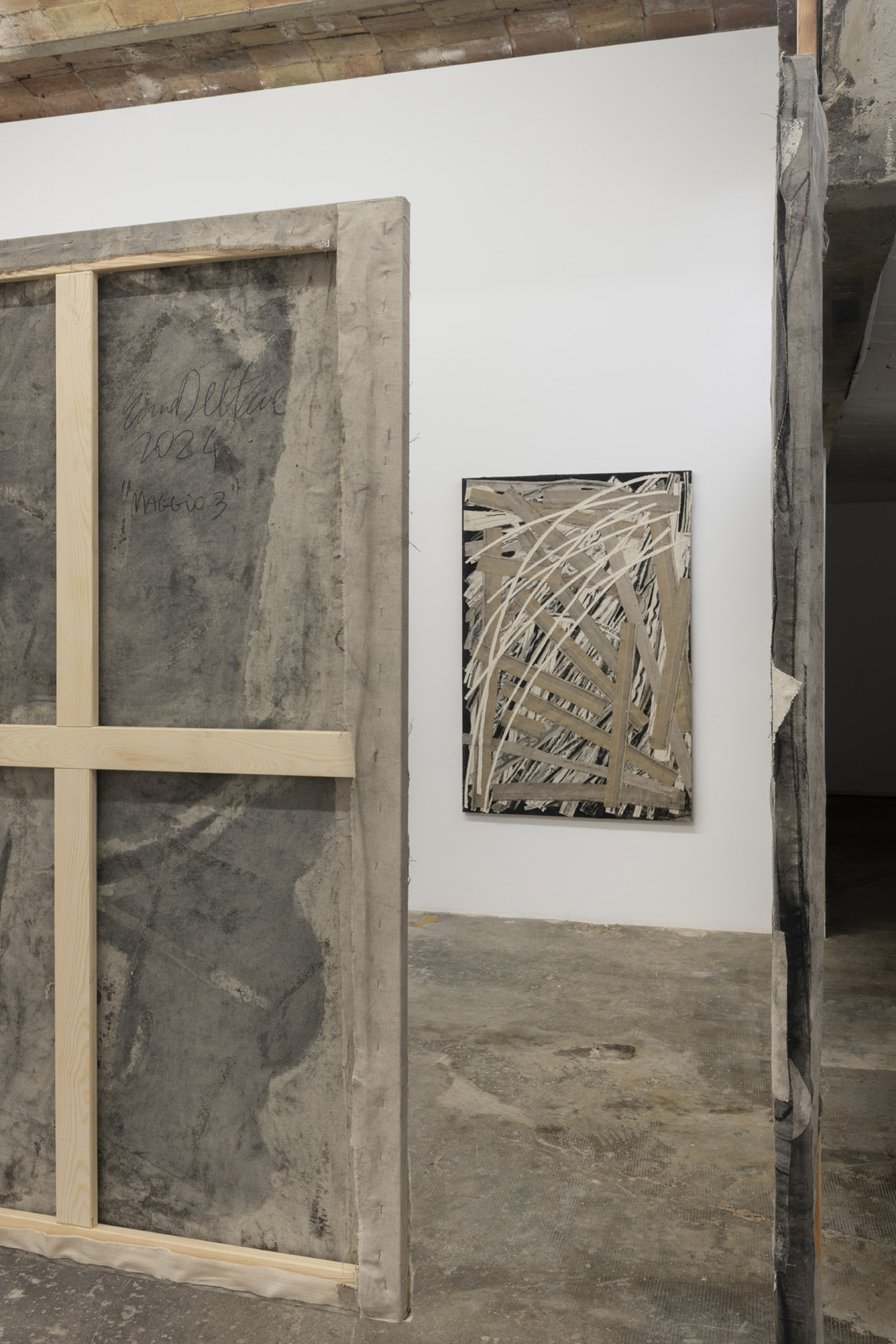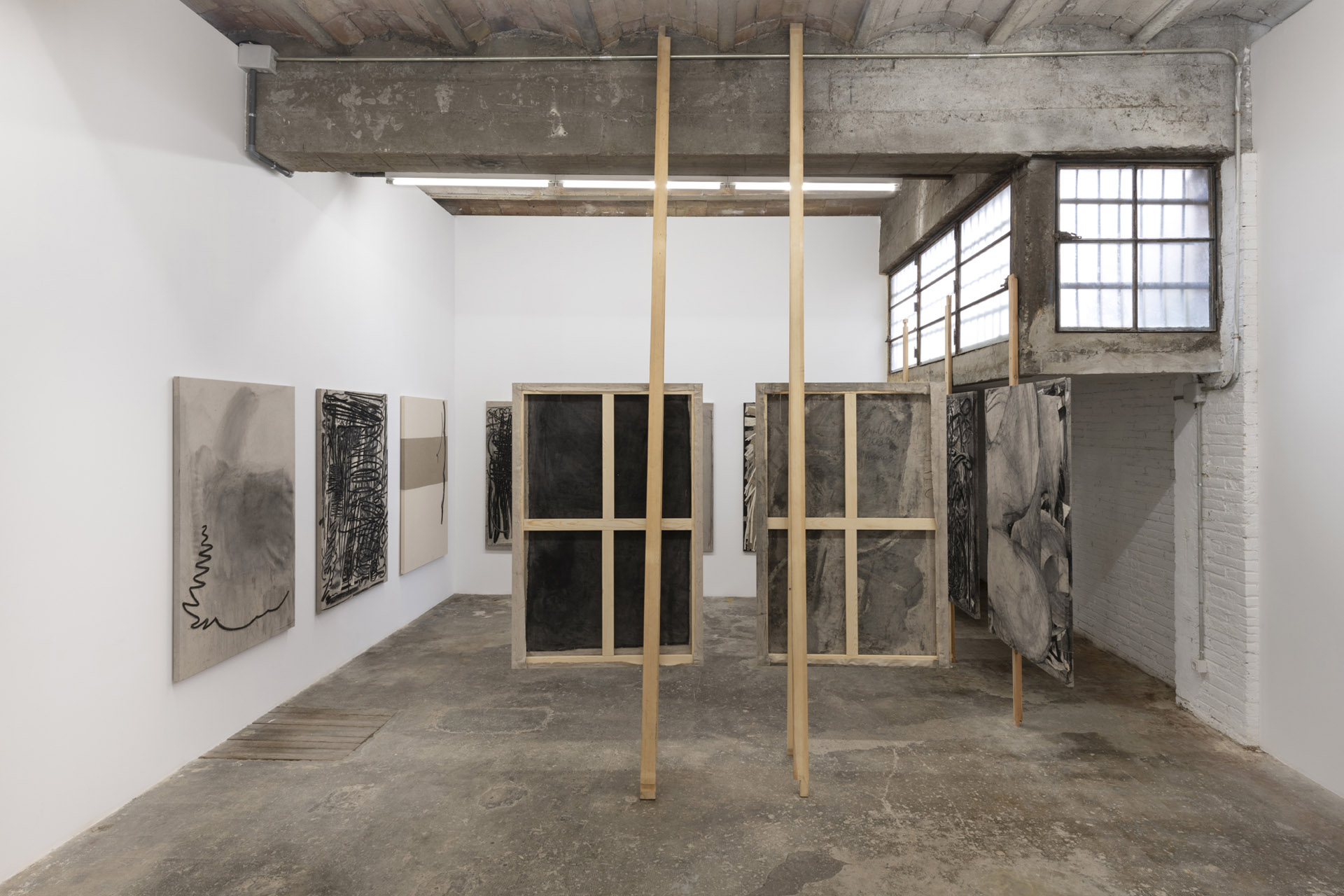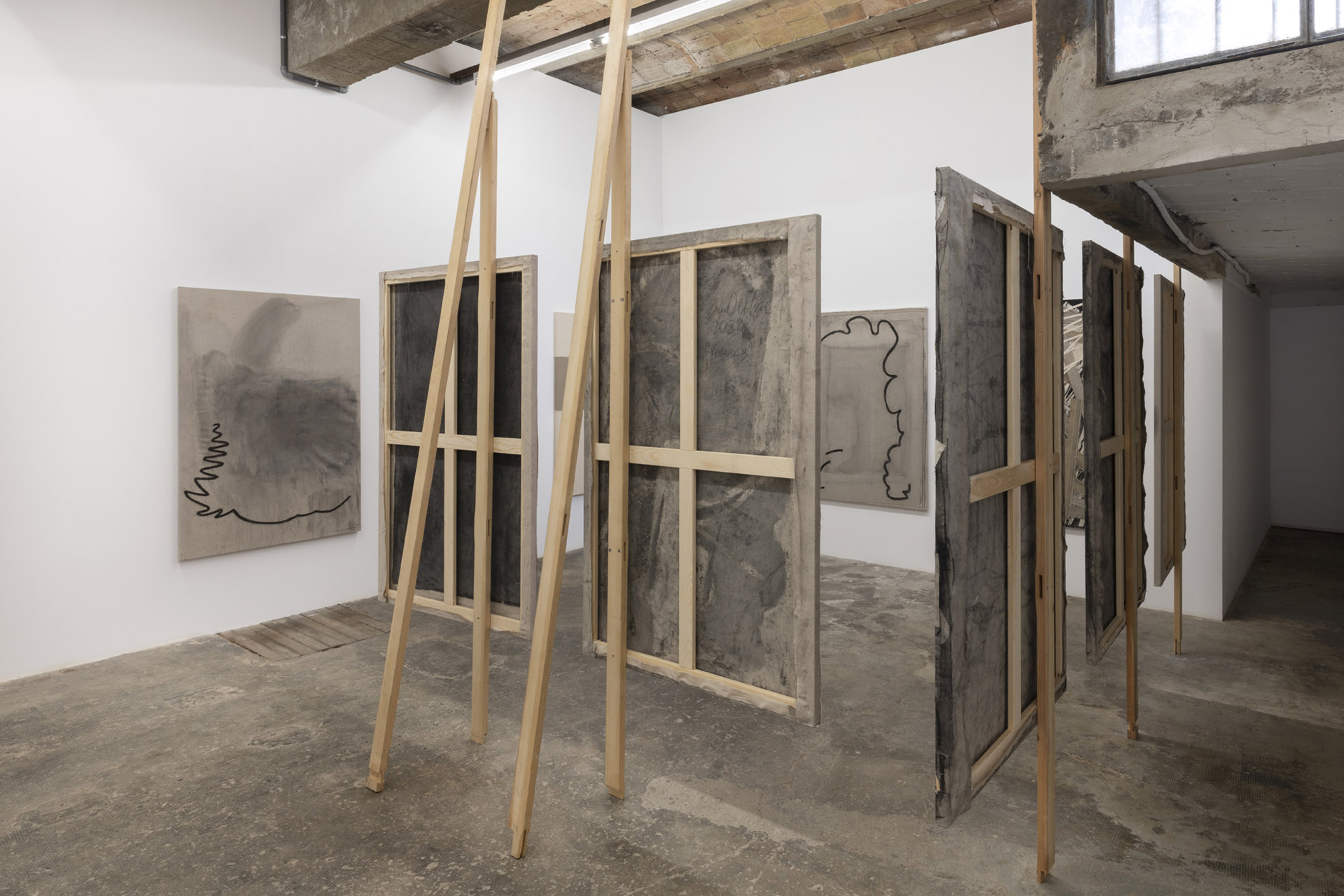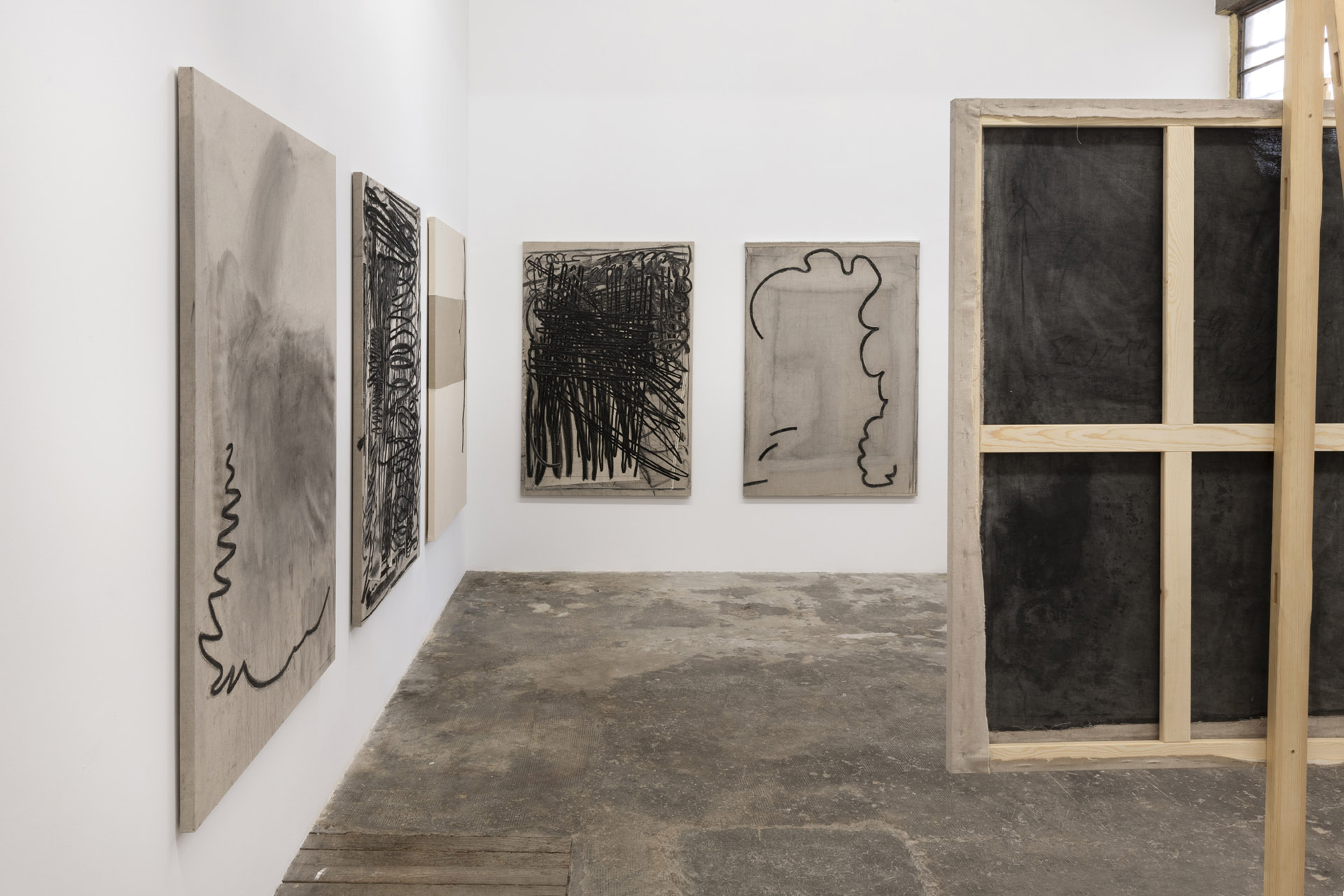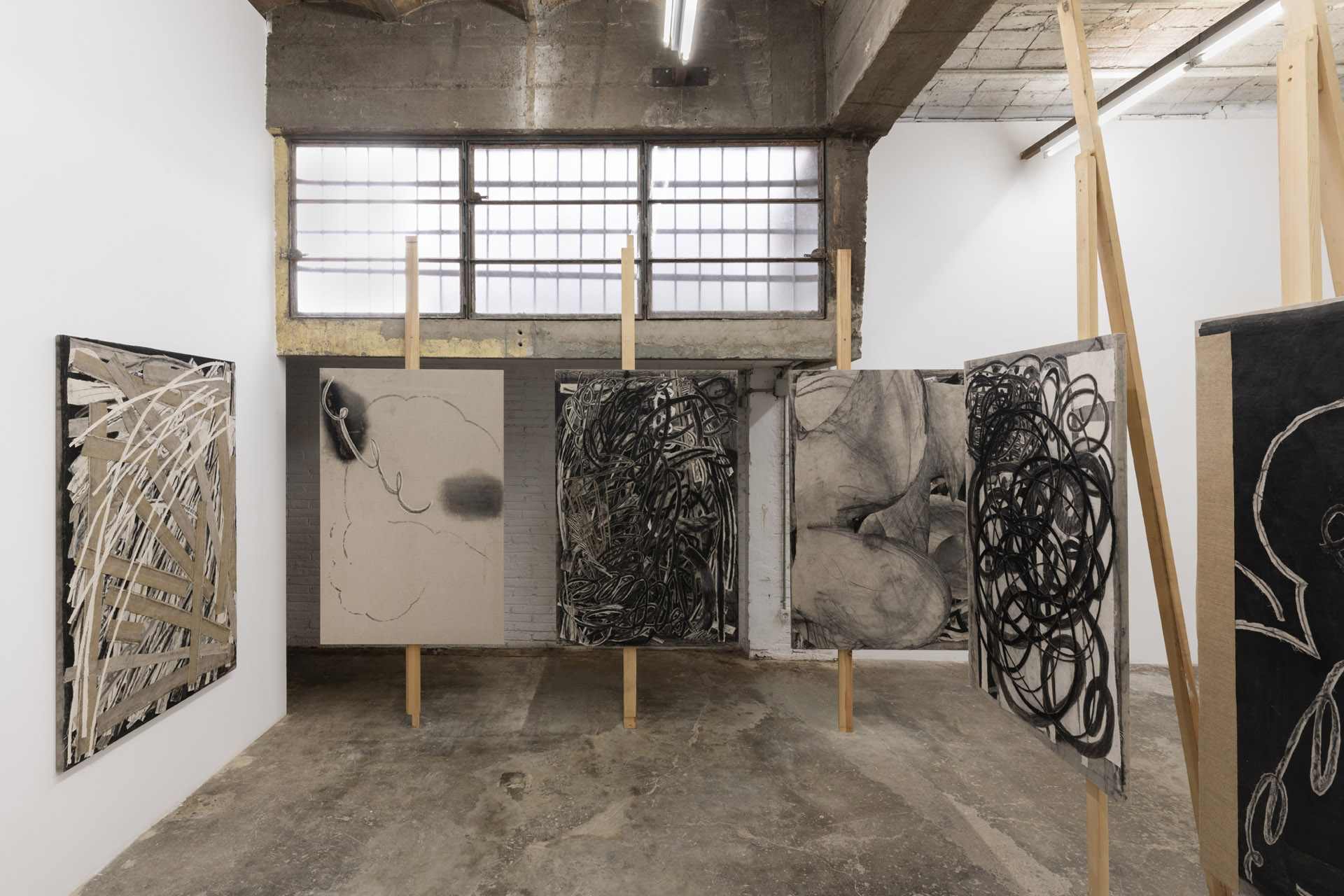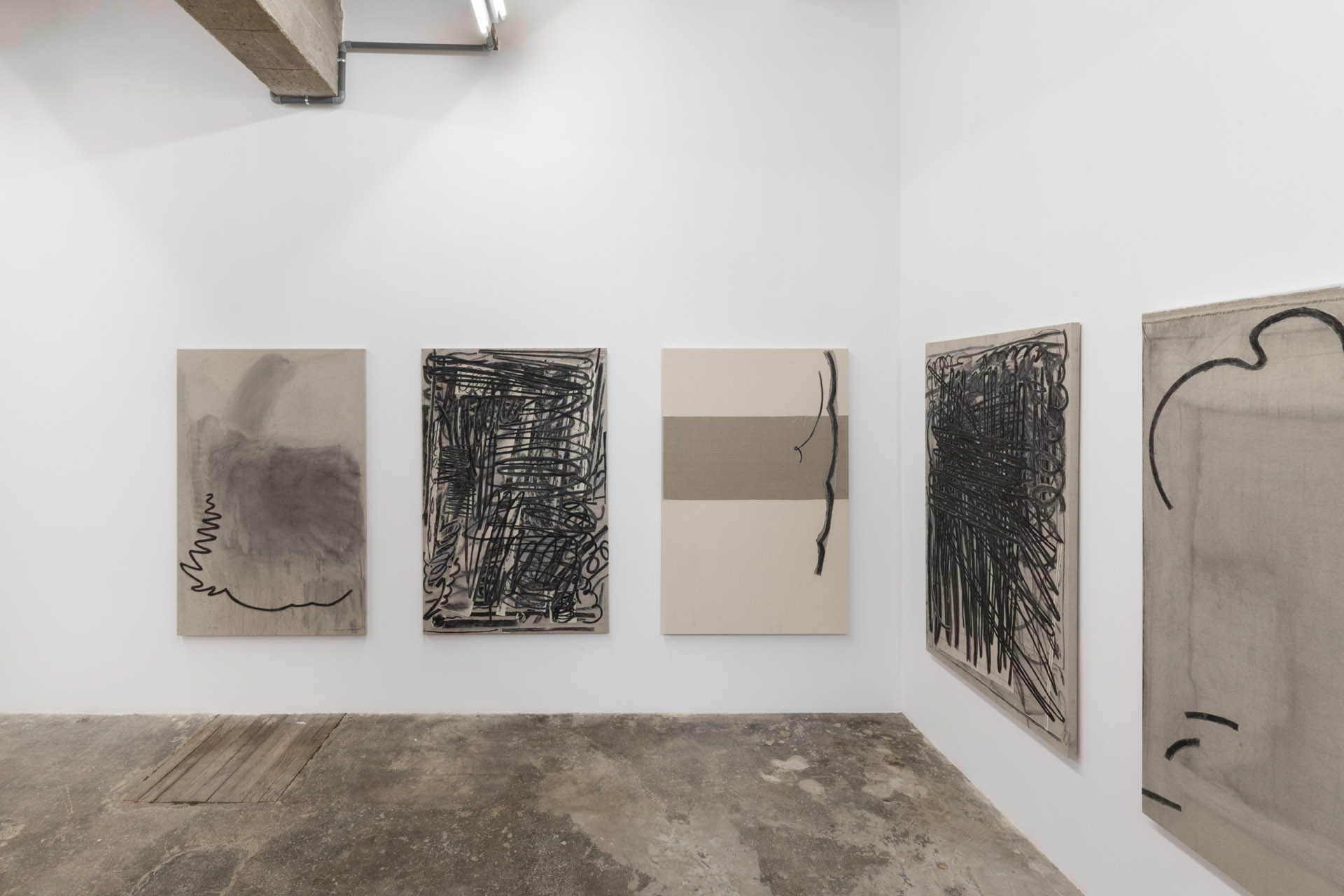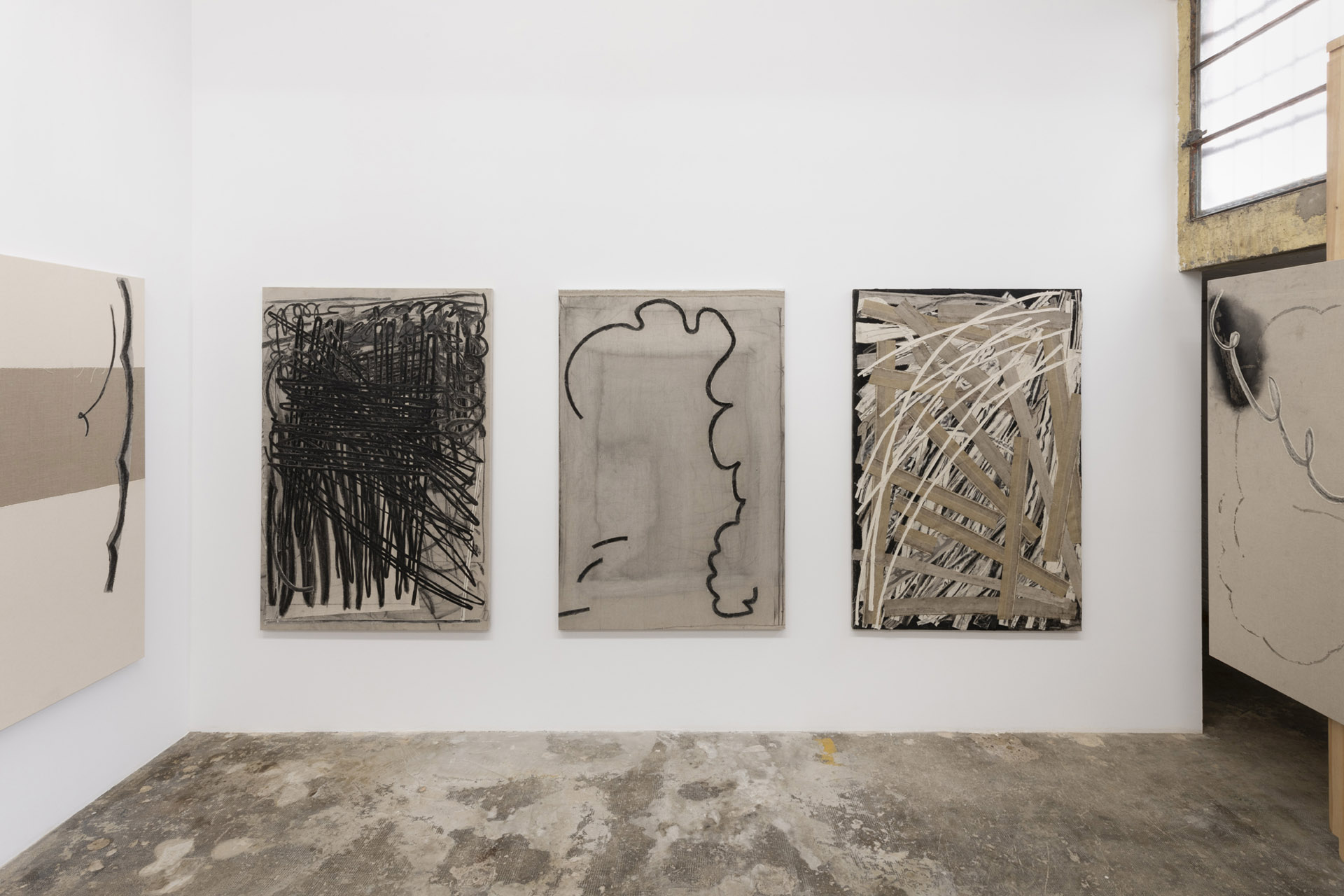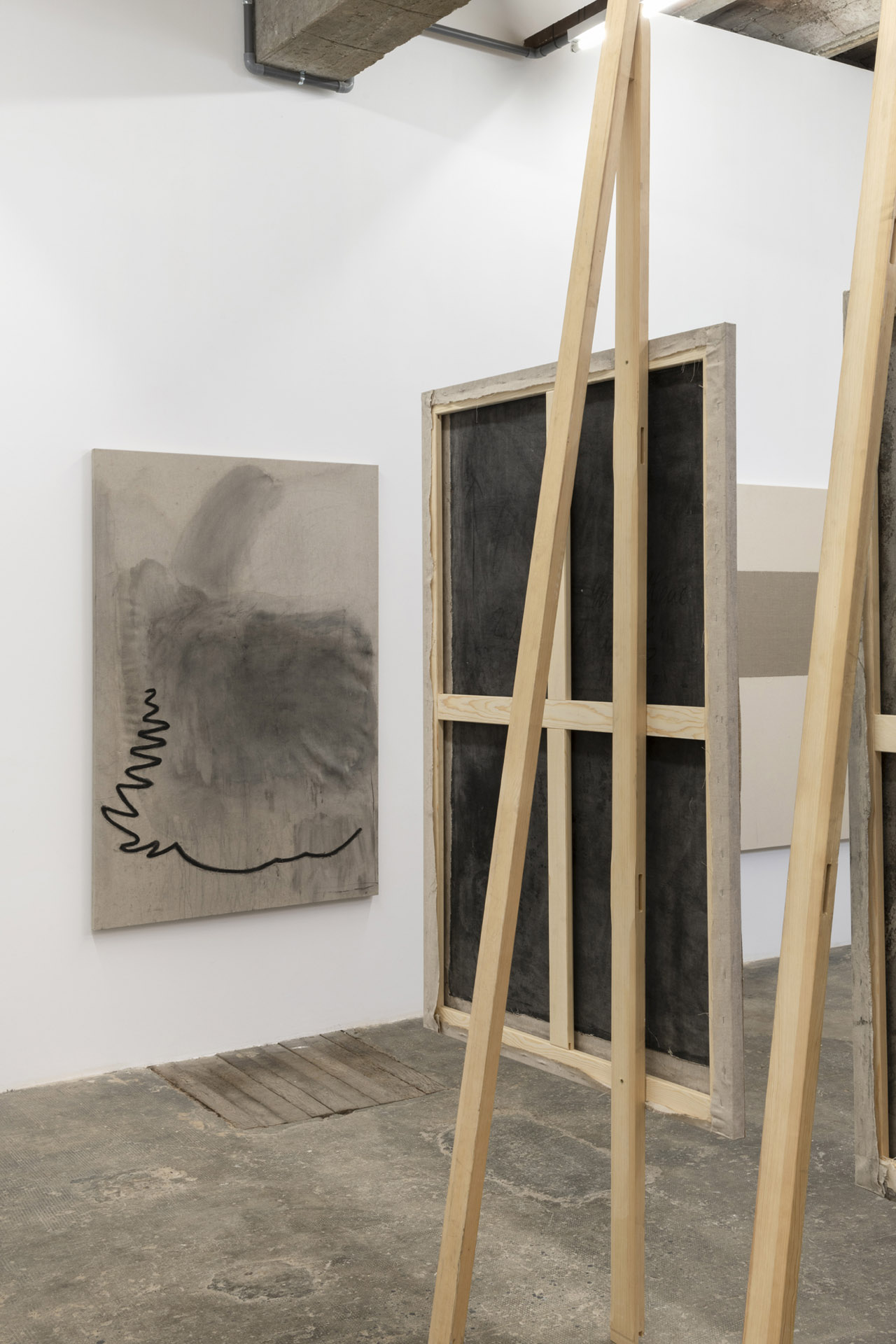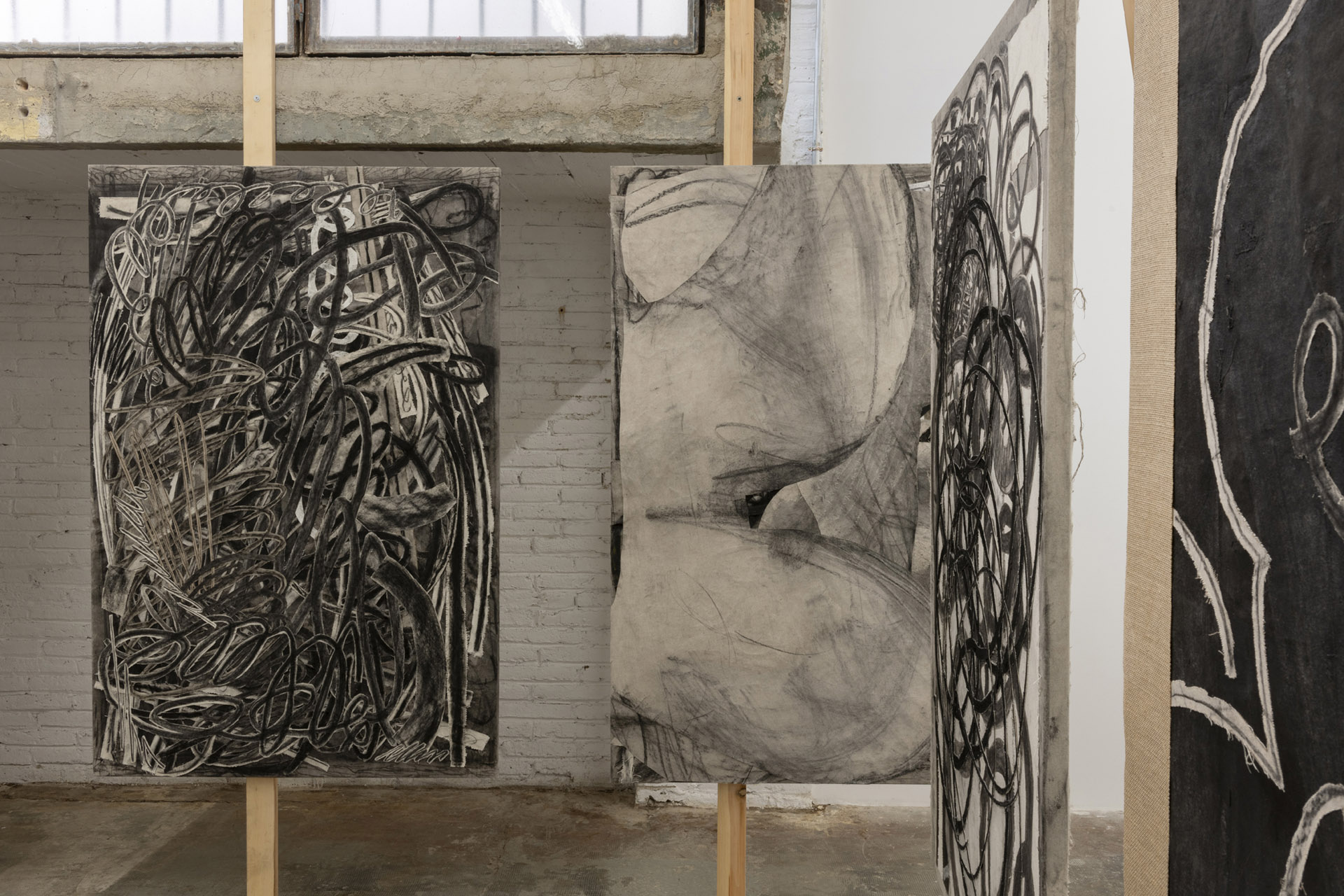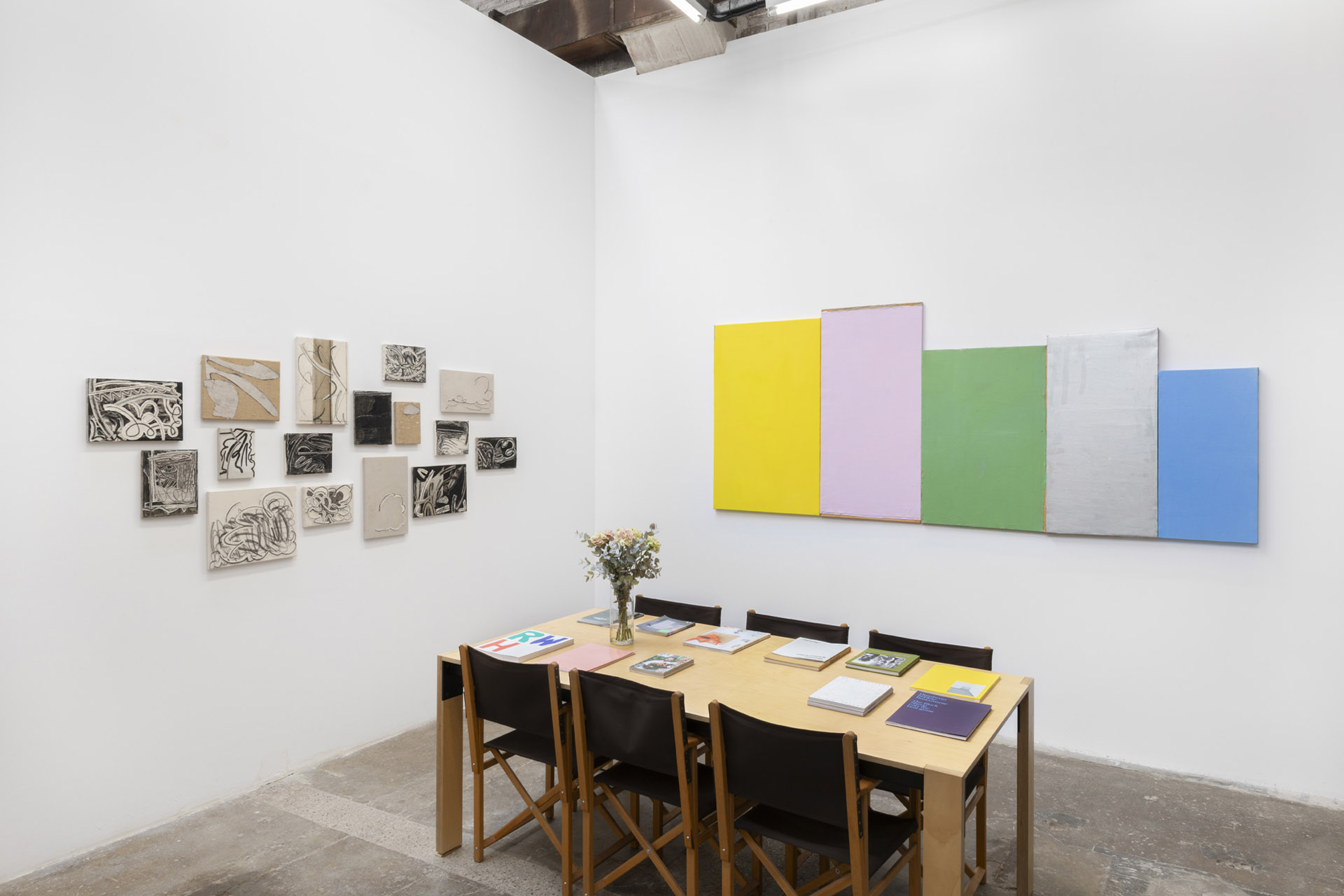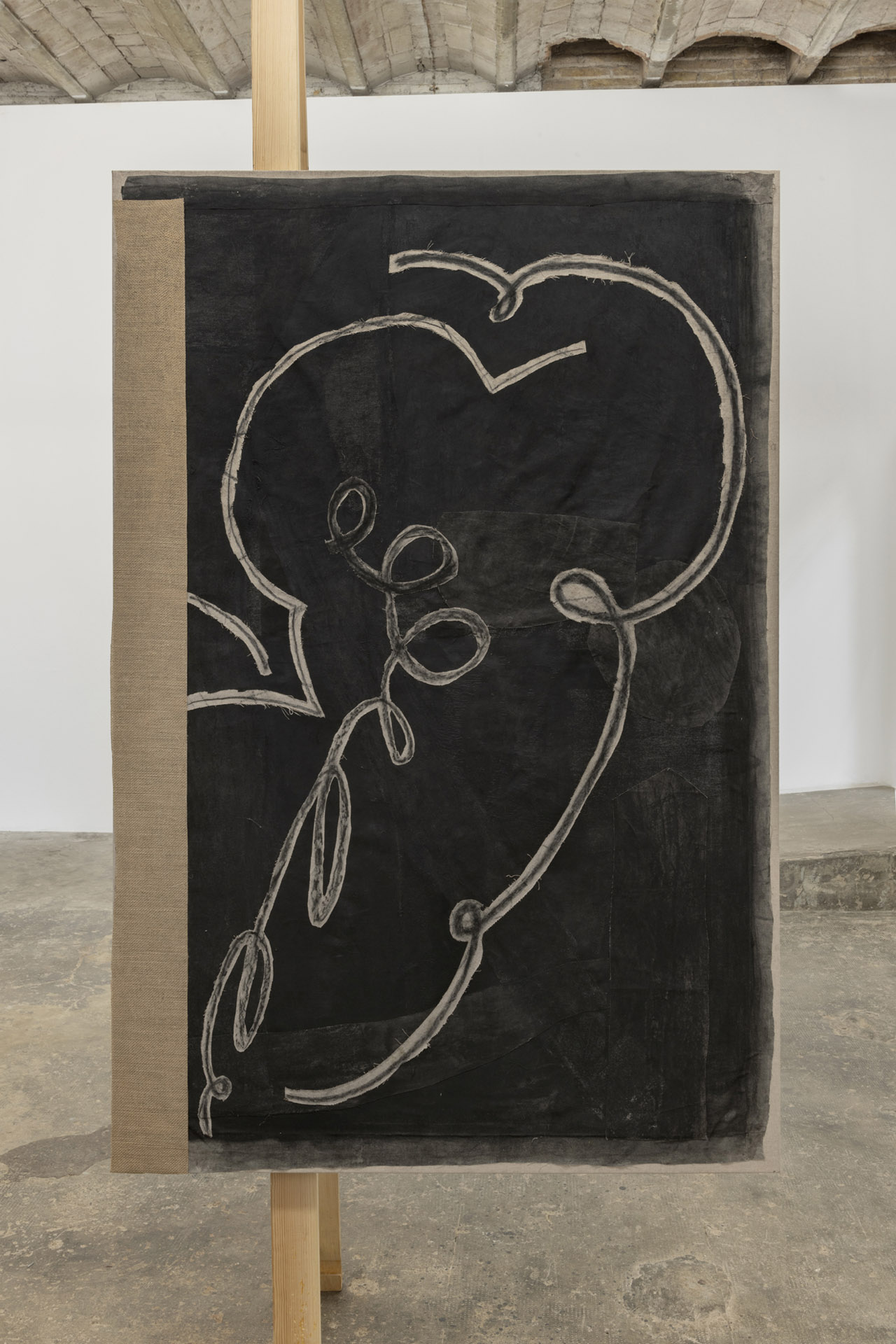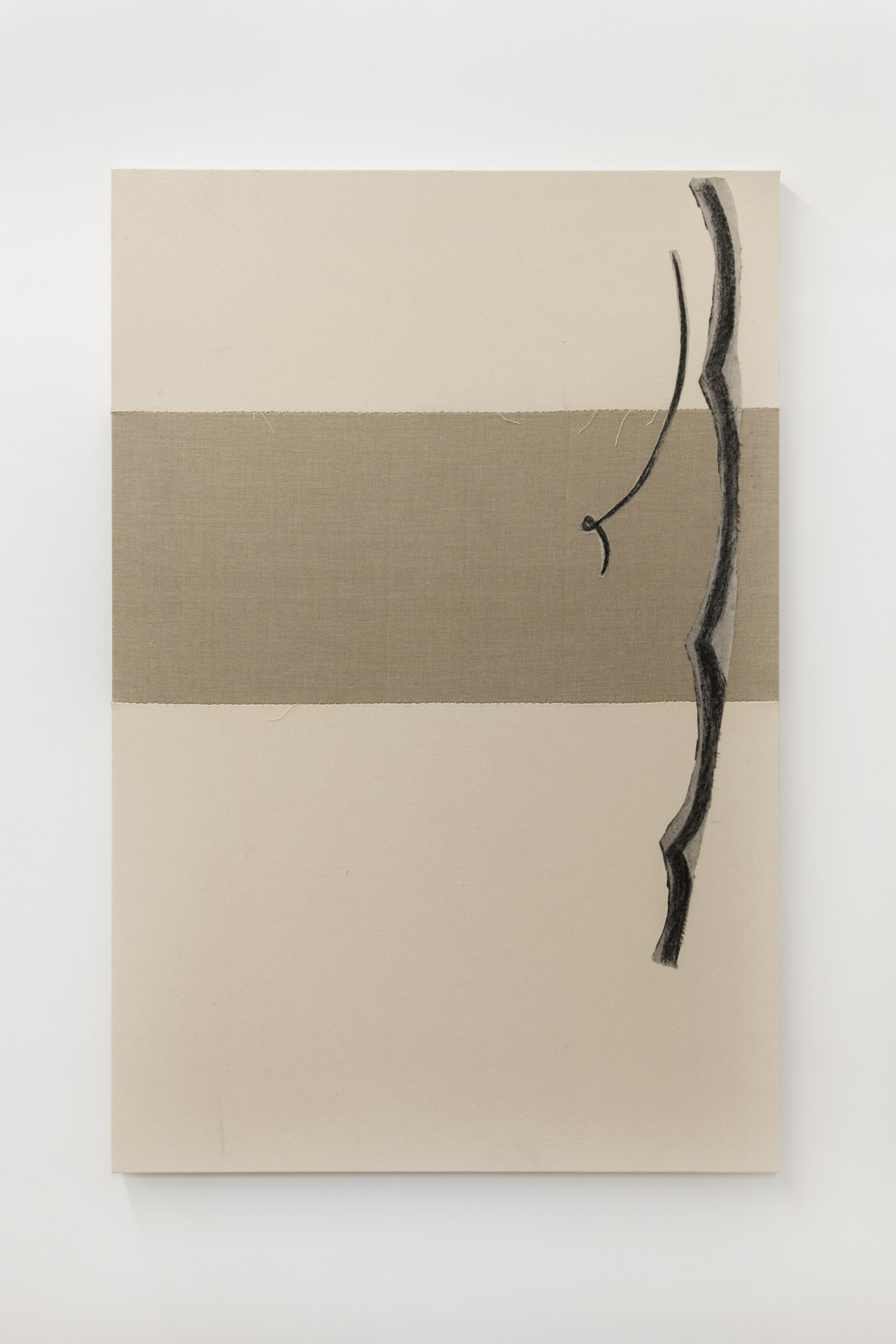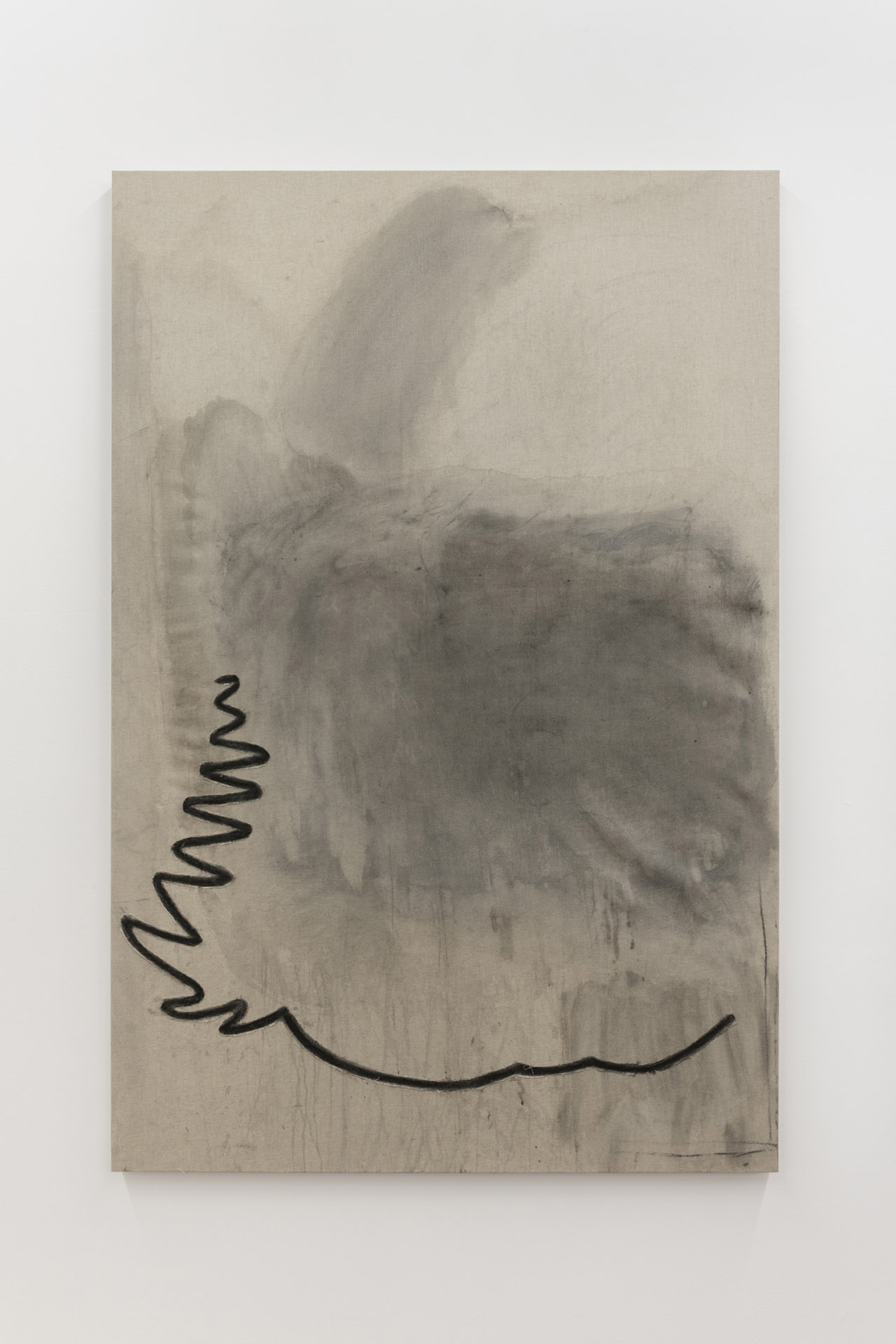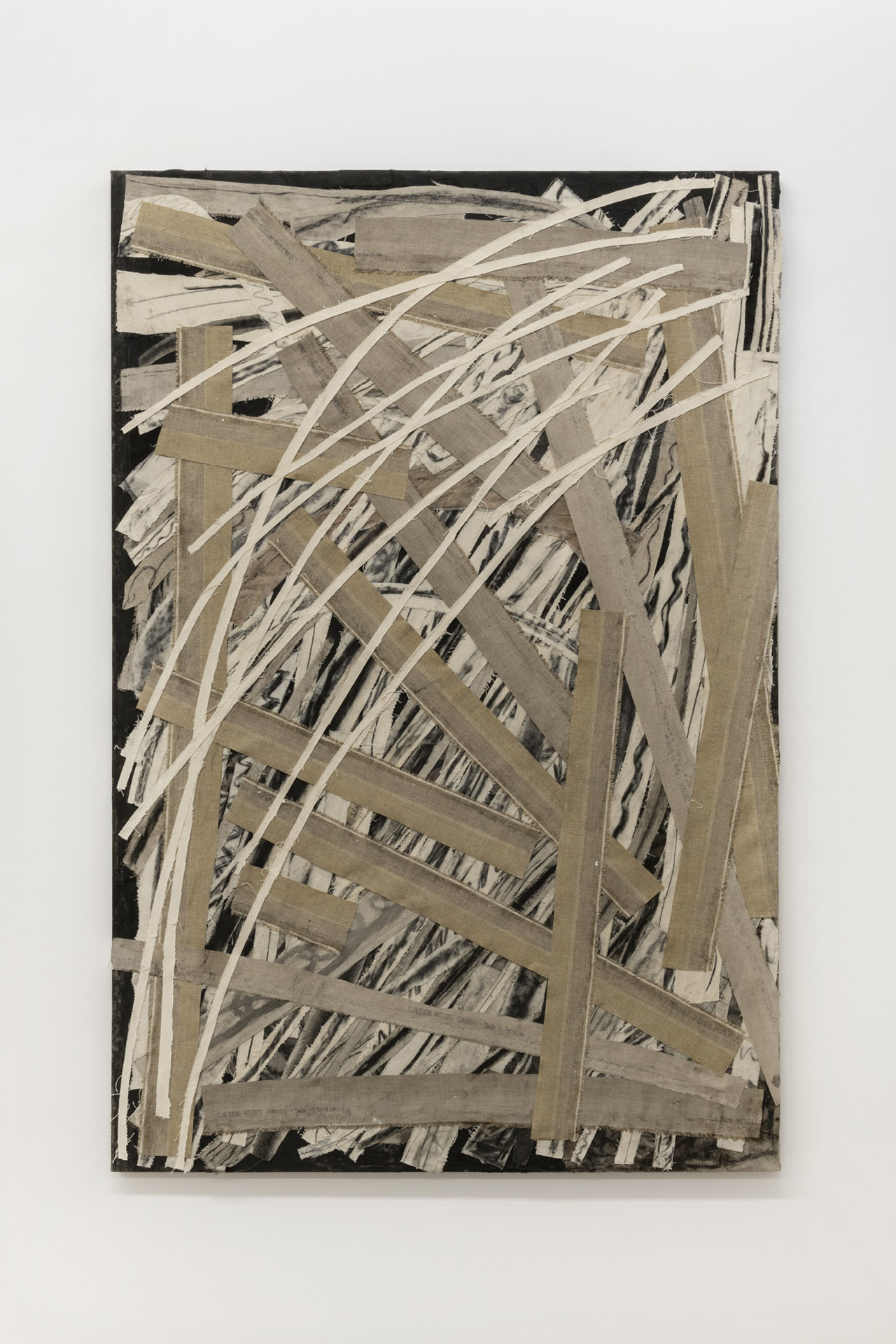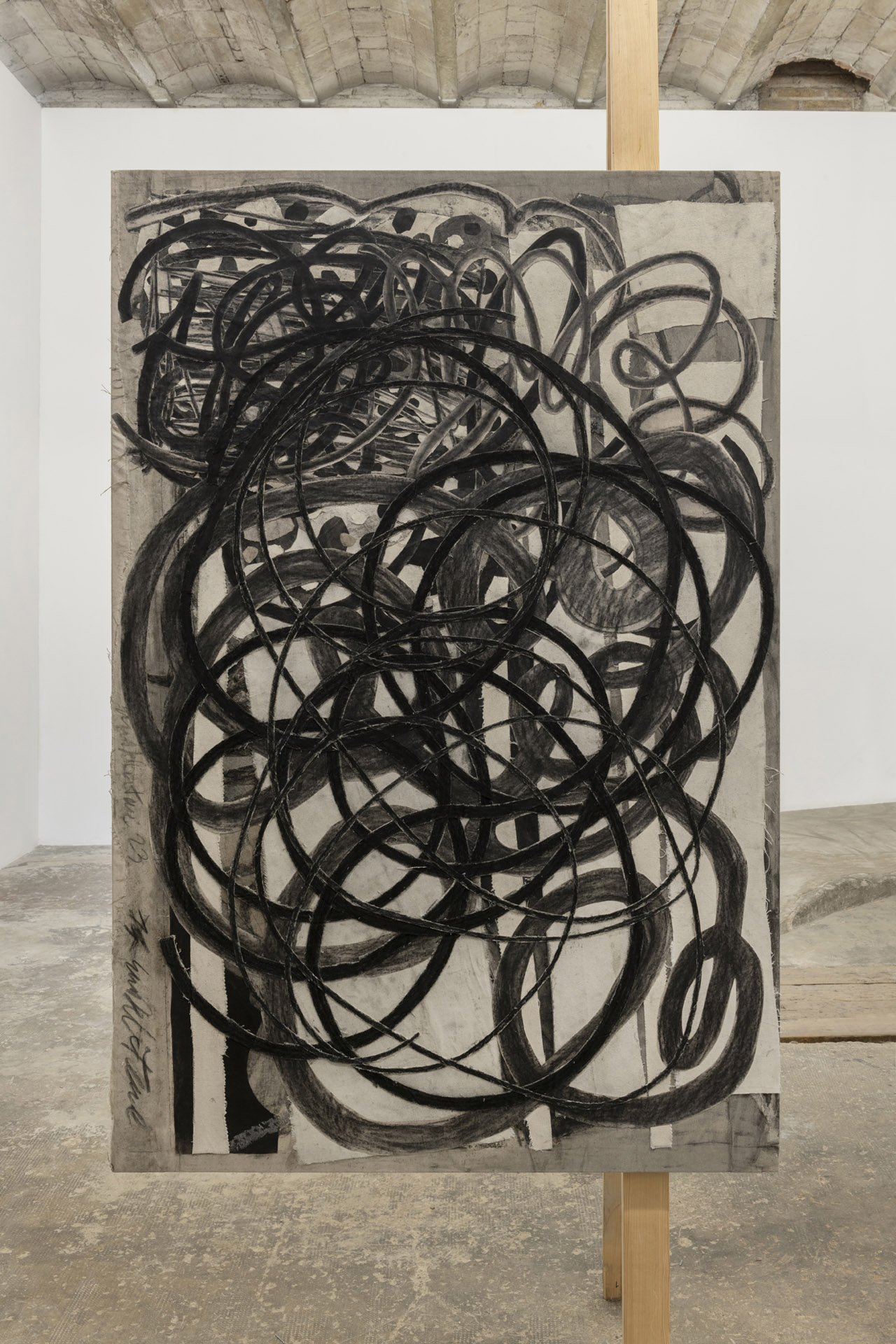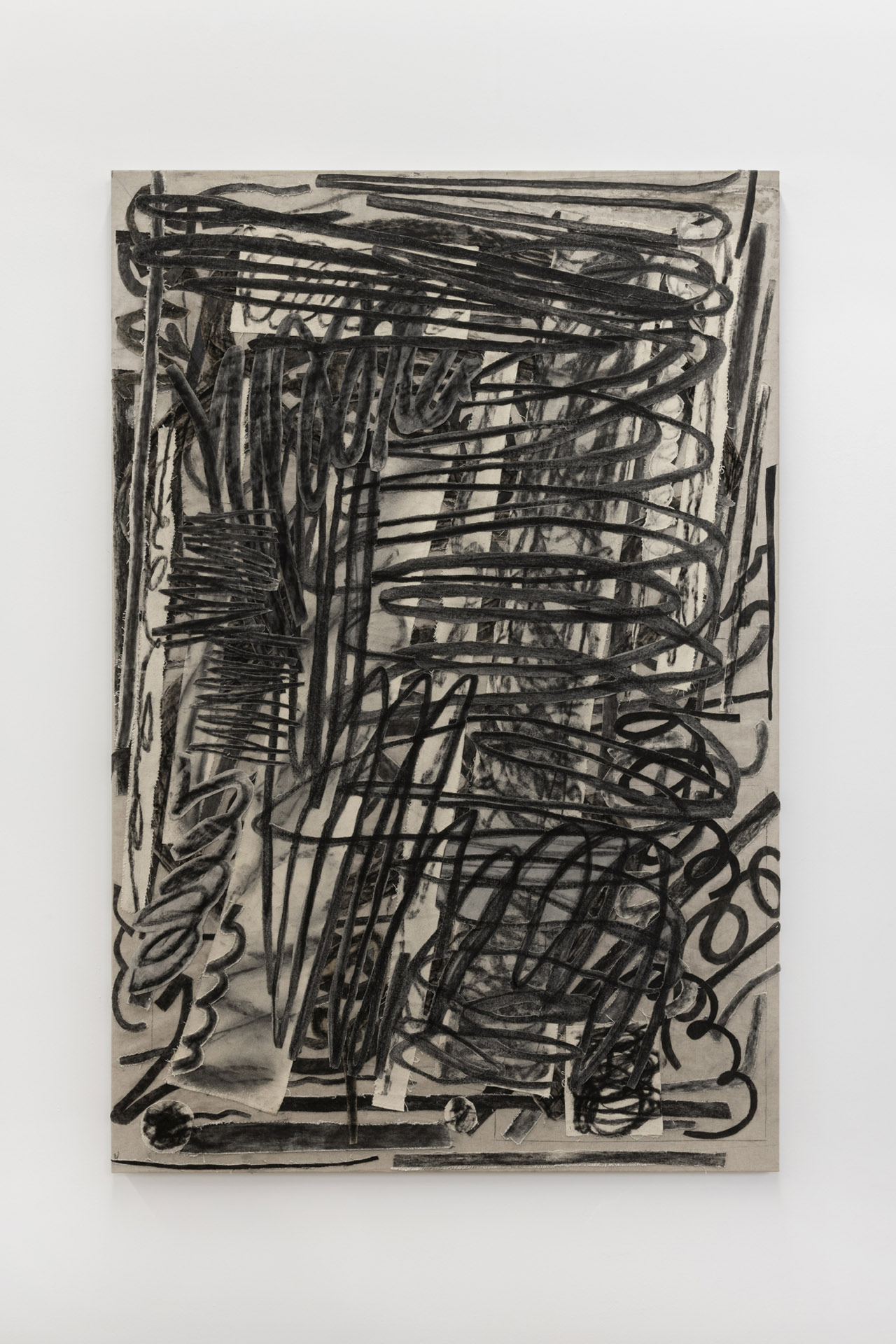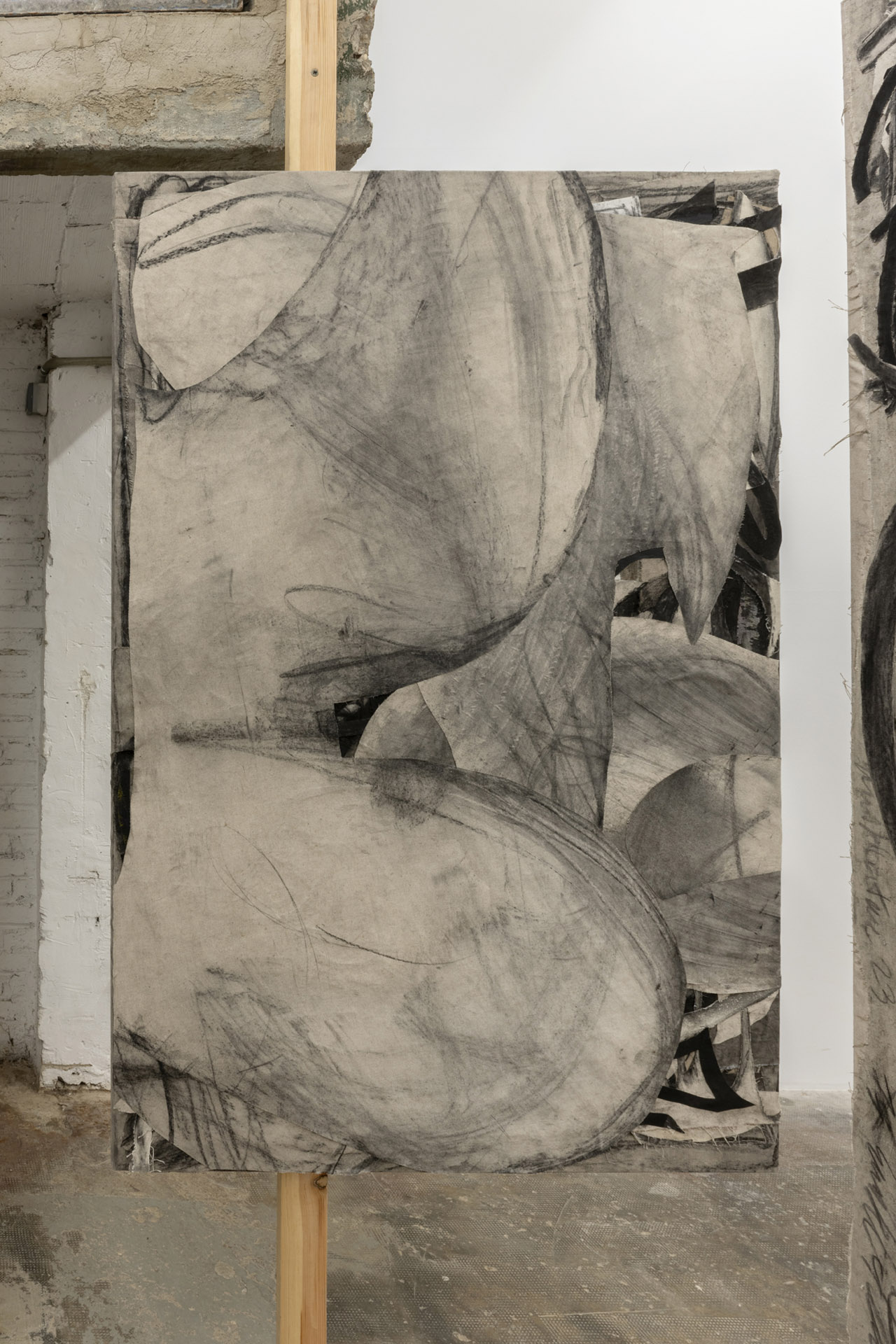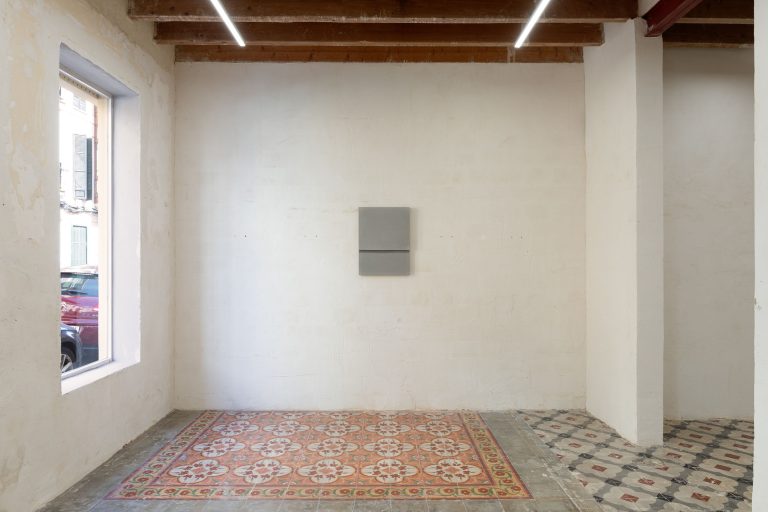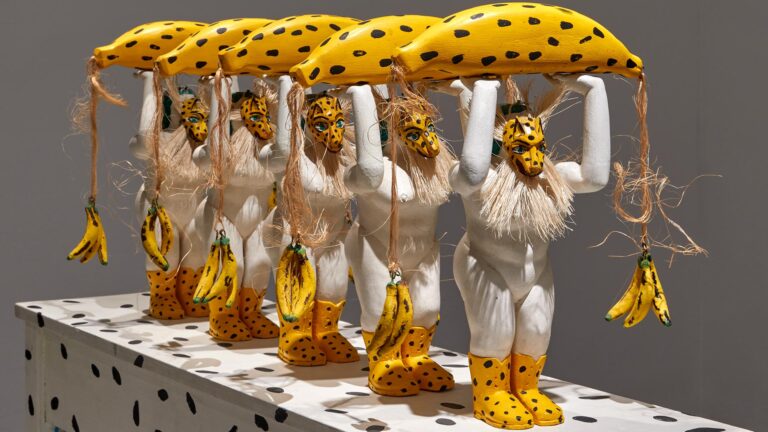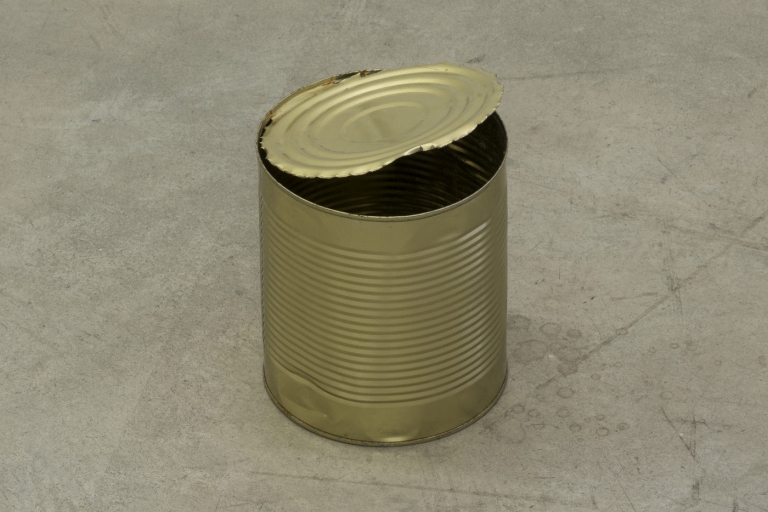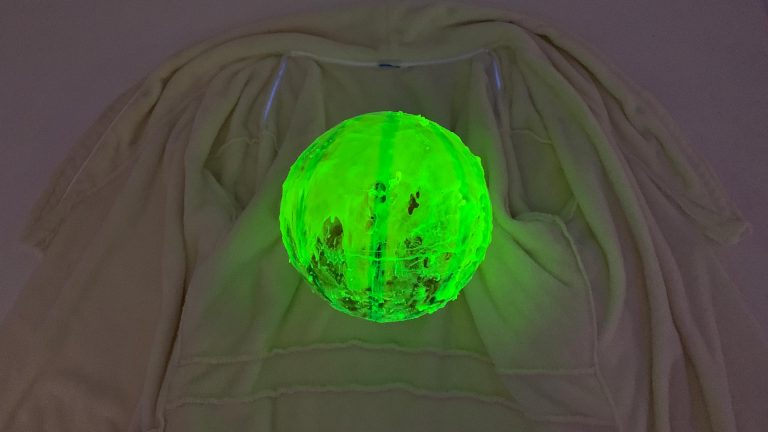Artist: Enrico Della Torre
Exhibition title: Maggio
Venue: Galería Alegría, Barcelona, Spain
Date: March 16 – May 11, 2024
Photography: all images copyright and courtesy of the artist and Galería Alegría, Barcelona
Fragmentation has the allure of the endless. Accordingly, an artist such as Enrico Della Torre (1998, Tradate, Italy) – whose essential interest has always been to explore the limits of the pictorial – finds therein visual resources that extend its capacity for seduction, all the way to infinity. The Italian artist constantly plays around with the fundamentals of painting and with the possibilities offered by the ongoing permutation of a paradoxical raw material in its modest frugality.
Maggio (“May”), Della Torre’s fourth exhibition at Galería Alegría, is named after the month in which the artist cut up thirteen pieces of cloth, each measuring 150 × 100 cm, and started working with them. His sole intention was to keep all the expressivity of the folds intact, to explore the underlying potential of the ever-displaced cutting and the decomposition into basic strokes. “The line inside the line of the cut itself, the backdrop of the raw cloth… these were the only traits that I focused on when starting this series”, he would go on to state, when talking about the origins of this exhibition. However, as he got deeper and deeper into this project, the works began to grow exponentially, as if their aforementioned decomposition into essential elements had set off a chain reaction, leading the whole pictorial ensemble into a kind of subatomic springtime.
Over the course of the production of these pieces, the signs began to overlap, multiply, assemble… as if this minimal painting were thinking itself over. Becoming ever more complex, compacted, solidified, getting caught up in its own fantasy, increasingly intricate and gloomy. “As the work progressed, I focused more and more on letting the phenomena develop of their own accord, allowing the picture to emerge by itself. It was all so carefree that I began to question the artistic nature of what I was doing.” Thus, in the peculiar tour proposed by Maggio, spectators will come across some mutant paintings; they’ll come across superimposed languages and expressive resources that split off from their origin in order to hybridize with others that seem unusual, albeit only in appearance. The material appears liberated, and leans towards a kind of exuberance that might seem irrational but which is a response to the imaginative potential that resides at the heart of the material itself.
Painting, however – and despite its fragmentation here, despite its being displaced in favor of cut-outs, woven as rags, accumulated as rubbish or interference – still manages to retain an intimate sense of order, in every single work in this exhibition. And, even more pertinently, it still manages to challenge the modus operandi of the artist today. Should he follow the glimmer of creative illumination? Or rather give himself up to the routine of the operator who so imprecisely combines a set of pictorial signs? This is, therefore, a speculative, constructive, feverish and generative work of painting, and it poses questions that contrast with the banal responses offered by contemporaneity: no matter how distinctly it pairs its fragments together, over and over again, it is incapable of taking on the kind of meaning that we find in the works of this exhibition.

